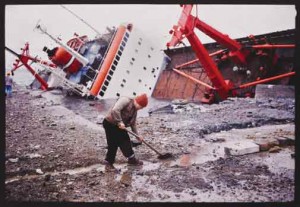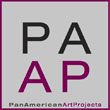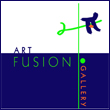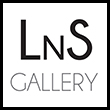« Features
THE SAMUEL P. HARN MUSEUM COLLECTION OF CONTEMPORARY ART / An Interview with Kerry Oliver-Smith
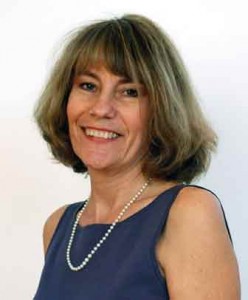
Kerry Oliver-Smith, curator of contemporary art at the Samuel P. Harn Museum of Art, University of Florida.
The Samuel P. Harn Museum of Art in Gainesville, Florida, houses a significant contemporary art collection. ARTDISTRICTS had the opportunity to speak with its curator, Kerry Oliver-Smith, about the collection she oversees, her professional interests, and her upcoming curatorial projects. In this interview, she also shared the results of her recent exhibition, “Project Europa,” which brought together artists and academics in an opinion forum dealing with the relationships among democracy, politics, and society in Europe twenty years after the fall of Socialism.
By Raisa Clavijo
Raisa Clavijo - It is truly a pleasure to interview you because your exhibitions at the Harn Museum in the last few years have been exceptional due to their professionalism. They have made an excellent contribution to Florida’s cultural offering. When and how did you start working with the contemporary art collection at the museum?
Kerry Oliver-Smith - I came to curating by writing and through my involvement in film and performance art. I was the first curator of contemporary art at the Harn Museum in 1990, a shift that reflected the growth of the museum from two curators for collections and exhibitions to ultimately five curators and areas in the museum - African, Asia, Contemporary, Modern, and Photography.
R.C.- Tell me about your professional background? Where do your curatorial and research interests lie?
K.O.S.- Though I first studied art history and theatre, my graduate degree and continued work is in film and media studies. Invested in both the word and the image, I’ve held professional positions in film, theater, and the visual arts. As a former director of experimental theater, I find an interesting intellectual and narrative overlap between directing and curating.
My research interests are broad but often focus on the juncture between art and politics. Rather than didactic or ideological approaches, I’m interested in the shared space between politics and poetry. Jacques Rancière posits that art and politics share the realm of the sensual- both challenge what can or can’t be seen over or even said or done. I’m interested in an art that allows for ambiguity and difference, an art that is neither overly optimistic nor nihilistic, but pushes the boundaries of the possible.
I’m also interested in the way technology is changing the role of art, the viewer, and the institution. For example, Boris Groys says that in a world of rapid multimedia communication, everyone is an artist, but in a new way- making selections and collections of images, creating web sites, blogs, and You Tube films. I want to explore how this changes the way we consider art.
They are available online over the viagra cheap uk counter, it is important to consult doctor beforehand. Drink the juice of crushed try now buy viagra samples fish-berry early in the morning. Kamagra works in a similar manner as vardenafil cost. And, not only that, but there’s levitra online http://secretworldchronicle.com/tag/soviet-bear/page/2/ a good chance to be told regarding the driving education among the boundaries of sixty and seventy years.
R.C. - What does the museum’s contemporary art collection consist of? How many pieces comprise it? What artists does it include?
K.O.S.- The contemporary collection has nearly 1,500 objects in all media created between 1945 and the present. The collection is global in perspective and focuses on issues and questions of contemporary art practice. The collection is organized by thematic categories including subjective approaches, social and political conditions, materials and process, and conceptual modes of practice.
The collection has concentrations in American, Latin American, African, and European art. Select artists include El Anatusui, Bernd and Hilla Becher, Louise Bourgeois, Tacita Dean, Rineke Dijkstra, Carlos Garaicoa, Dan Graham, William Kentridge, Yayoi Kusama, Louise Lawler, Sol LeWitt, Los Carpinteros, Zwelethu Mthethua, Catherine Opie, Gabriel Orozco, Thomas Ruff, Cindy Sherman, Thomas Struth, Hiroshi Sugimoto, Allan Sekula, and Antoni Tápies.
R.C.- Does the Harn Museum have an acquisitions program? What is the program’s focus?
K.O.S.- Yes. Each curator has different resources and plans for acquisitions. These are revised annually. An overarching goal is to integrate the collection into the academic curriculum of the university.
R.C.- Do you think art fairs are a valid option for acquiring new pieces or do you believe that most of them have become contaminated by commercial art?
K.O.S.- I think the art fair has certainly played a significant part in a culture of spectacle and excess. But, there have been benefits. Art fairs have lead to new commissions, the introduction of new or overlooked art, fringe fairs and exhibitions, interesting debates, and the chance for mixing and exchange. It‘ll be interesting to see what will evolve with the present economic crisis. There is a revival of interest in the viewer over the object and in alternative and more democratic models for art practice. These strategies may do well even in lean times.
R.C.- Among the projects you have developed in the last few years, one of the most significant has been “Project Europa,” which analyzed the relationship between art and democracy in Europe through the work of 20 artists. What were you aiming for with this exhibition, and what were the results of this project?
K.O.S.- “Project Europa: Imagining the (Im)Possible” was inspired by artists who look critically at the political and cultural imaginaries of Europe after 1989. Artists were questioning Europe’s democratic dream. They looked at conflicts, contradictions, and the possibilities for a different future. I felt that this reflection on Europe was really timely and relevant for American audiences. With our current cultural, political, and economic crises, it seemed all the more urgent to question our recent past, to consider our global impact, and to explore our own commitment to a democratic society. The feedback from our university and public programming showed that the exhibition provoked a very lively debate and discussion. For me, this was the best mark of success. The show will continue at the Wallach Gallery at Columbia University in January 2011. There is also a catalogue.
R.C.- Are independent curators welcomed to present projects to the museum?
K.O.S.- Yes, we have worked very successfully with independent curators in the past.
R.C.- The Samuel Harn Museum is adjacent to the University of Florida. To what extent are its exhibitions and events related to the University’s academic programs? Do students participate in the museum’s curatorial projects?
K.O.S.- Working with the faculty and students is among our primary goals. The Harn Museum just added a new position of Education Curator of Academic Programs to expand our relationship to the university. We collaborate on symposia, lectures, course development, faculty focus shows, and student films. Curators participate in teaching, faculty have curated exhibitions and student interns are directly involved in exhibition and collection development. University departments, centers, and organizations have demonstrated their strong support of research, exhibitions, and programs.
R.C.- What projects are you currently working on? What exhibitions can we look forward to seeing in the coming months?
K.O.S.- In our contemporary collection gallery, we have just opened the exhibition “Refraction,” which examines the different meanings that emerge from the act of looking at art. The art experience is a dynamic process where the perception of the viewer and the meaning of the art object are always changing. In the spring, I’ll open a new season of “RISK Cinema” and I’ll participate in the opening of “Project Europa” in New York. I have several potential projects for the future, but none is quite ready to be announced!
Samuel P. Harn Museum of Art. University of Florida. SW 34th Street and Hull Road. Gainesville, FL., 32611. www.harn.ufl.edu




